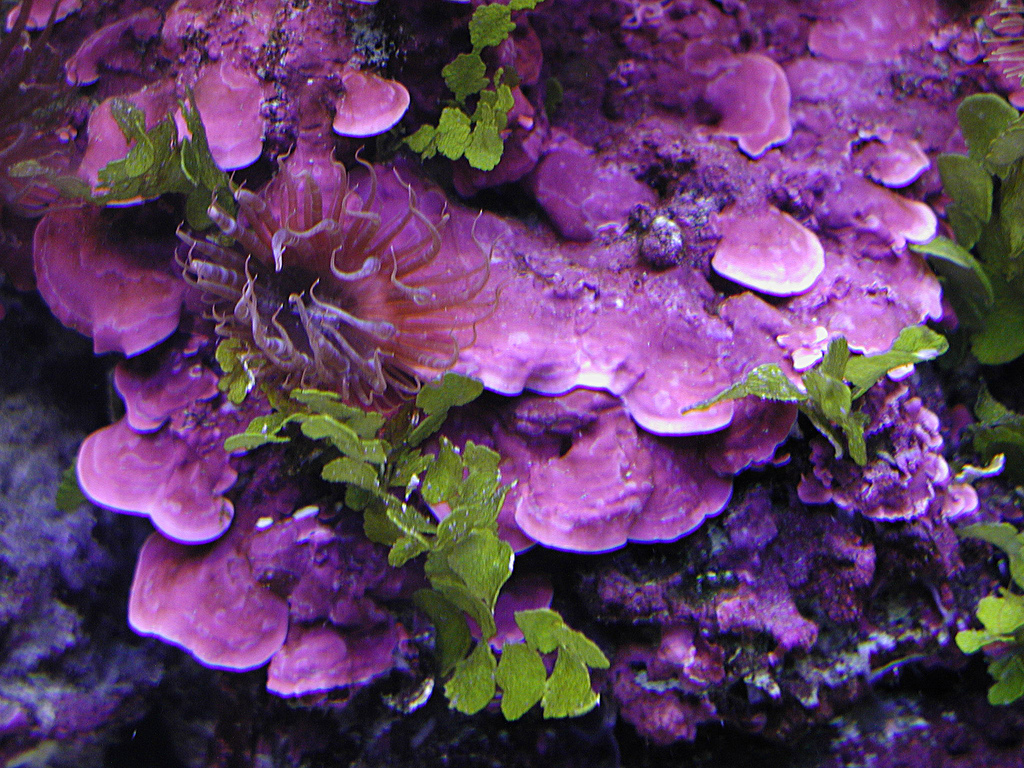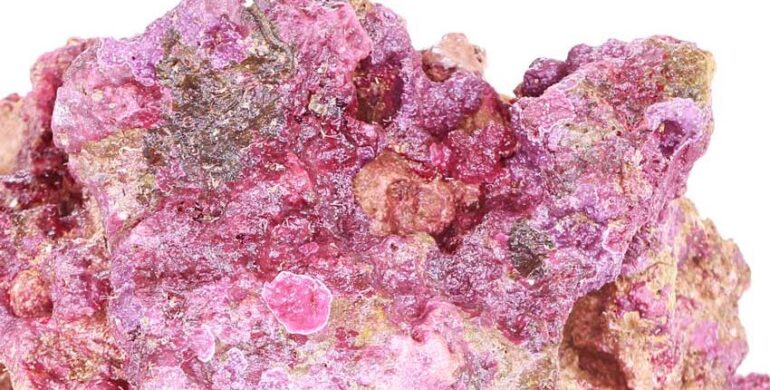Coralline Algae is a vey important part of the reef and can be desirable in the home aquarium as well. In nature, coralline algae grows in lots of different ways but for our home aquariums we are primarily interested in crustose coralline algae, or CCA for short.
On a wild reef crustose coralline algae can be so ubiquitous and covering so much of the reef, that it’s easy to forget it’s there. With many species simply forming an encrusting form over any and all available real estate on the reef it is incredibly important at cementing the reef, and providing new sites for corals to settle on.

In the early days of reef building having good and luxurious coralline algae growth on live rock and tank walls was a hallmark of a healthy tank. And once upon a time the appearance of CCA in the reef aquarium was often used a sign that the tank is ready to accomodate stony corals.
This is no coincidence since coralline algae and corals both build an aragonite ‘skeleton’, and require a similar balance of water chemistry in order to grow and thrive. It is perhaps this overlap of mineral demand which has made CCA less of a focus in contemporary reef aquariums.

Since coralline algae uses calcium, carbonate and magnesium to grow, not to mention many trace elements, explosive growth of CCA can be viewed to be in direct competition with aquarium corals. However the appearance of good, healthy coralline algae can be very beautiful and there are some things reef builders can do to encourage a nice living purple layer to grow in the aquarium.
There are many things you can do to encourage coralline algae to grow in your aquarium, but first of all you need to make sure that there is already some live CCA there to begin with. There are many types of mined and man-made rocks available these days and although they might appear purple, many of these aquarium rocks are barren save for a little bacteria.
It used to be common practice to obtain a kind of ‘coralline soup’ from local fish stores, although these were usually made in house, and not mass produced. Indo Pacific Sea Farms is one company which still produces and sells coralline algae starter packs to make sure your tank is seeded to begin with. Once you know you have live coralline in the tank, either through growth on the rocks, glass or equipment, then you can tweak conditions to make it grow faster and prettier.
AS mentioned, coralline algae is made of aragonite so therefore it appreciates the same high calcium, alkalinity and magnesium balance that corals do. A high pH helps to increase the development of aragonite in corals and coralline algae, and CCA seems to particularly appreciate regular addition of strontium and iodine.

However if you want to grow coralline algae a little more specifically, the species present in home aquariums grow best in certain environemnts. If conditions are right CCA will blanket even the brightest parts of warm reef aquariums. But as a whole, CCA grows better and more colorful in dim light and in cooler aquariums.
You may have already noticed that caves in the reefscape or the undersides of rocks, corals and in-tank equipment usually grows more CCA on the shaded parts. In some cases sumps with a small amount of stray light might grow more and better CCA then the display tank itself.
Be careful what you wish for because while CCA is undeniably beautiful, if it grows in abundance it will be an extra chore to scrape the front glass and you might have to service wet equipment more often. However should you succeed in striking a balance between coral and coralline algae growth, your aquarium will develop the most exquisite backdrop for aquarium corals, a nice purple blanket over most of the aquarium rocks.



